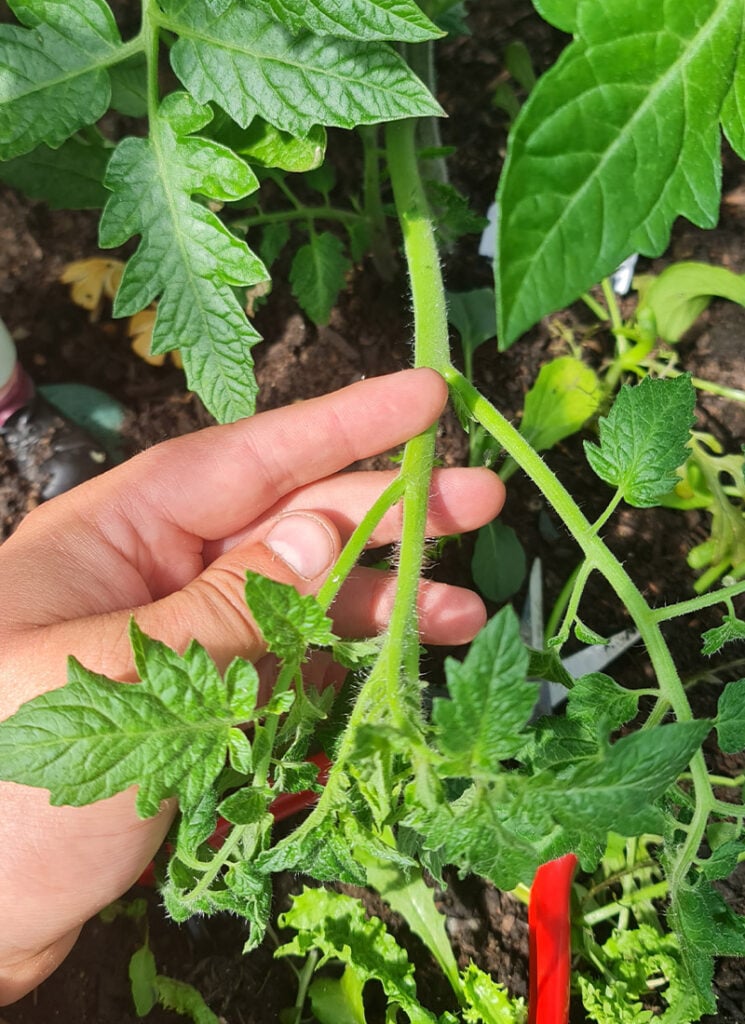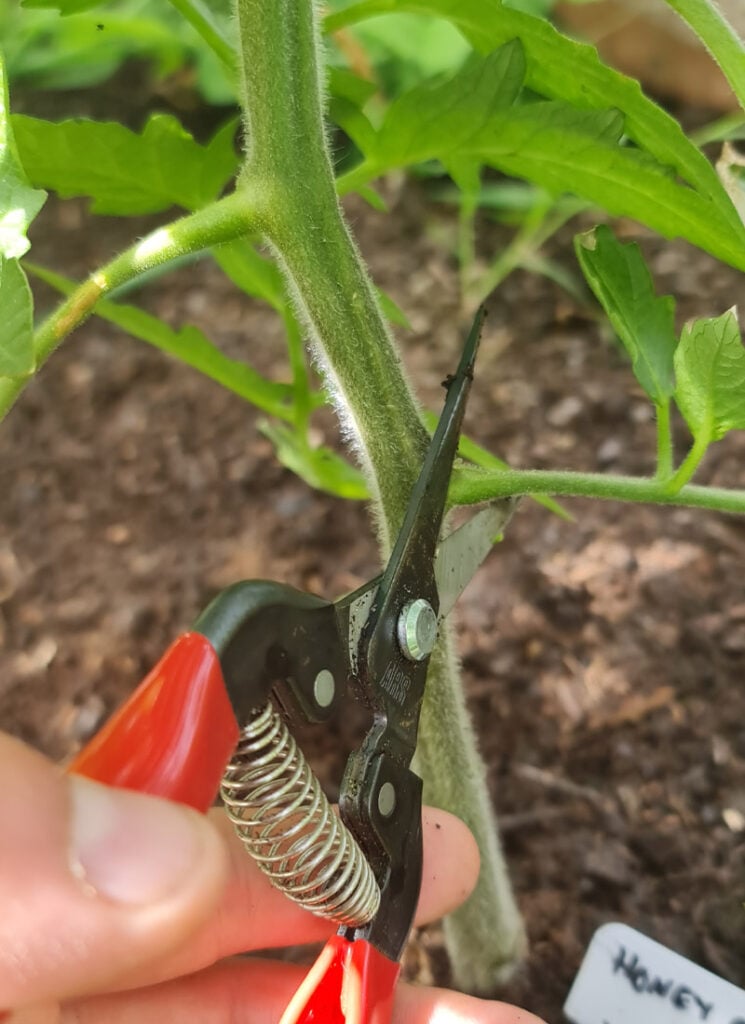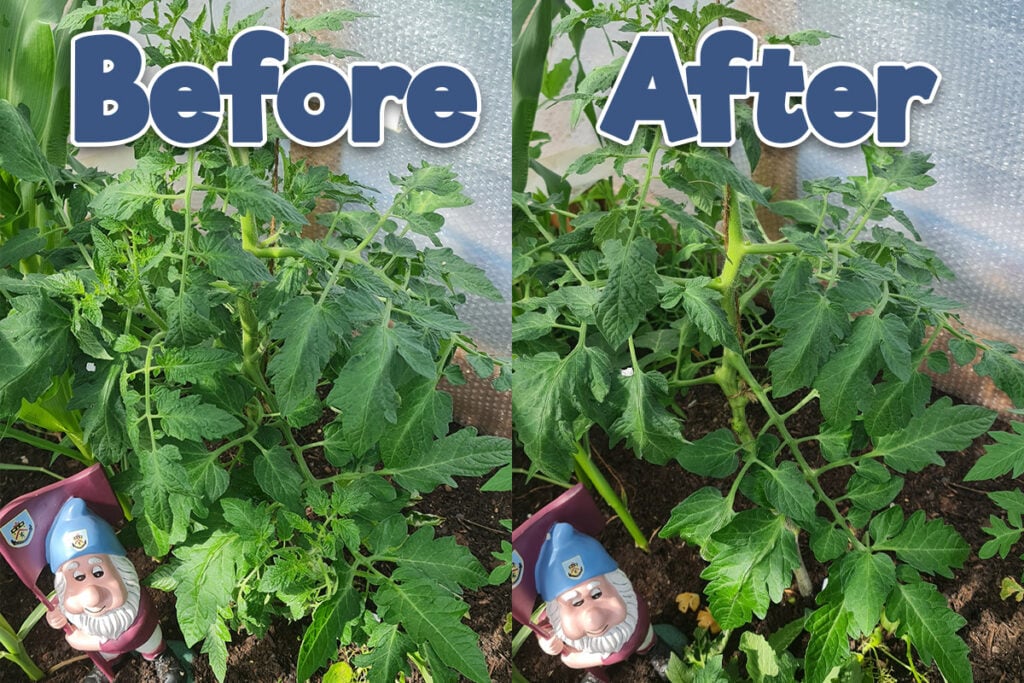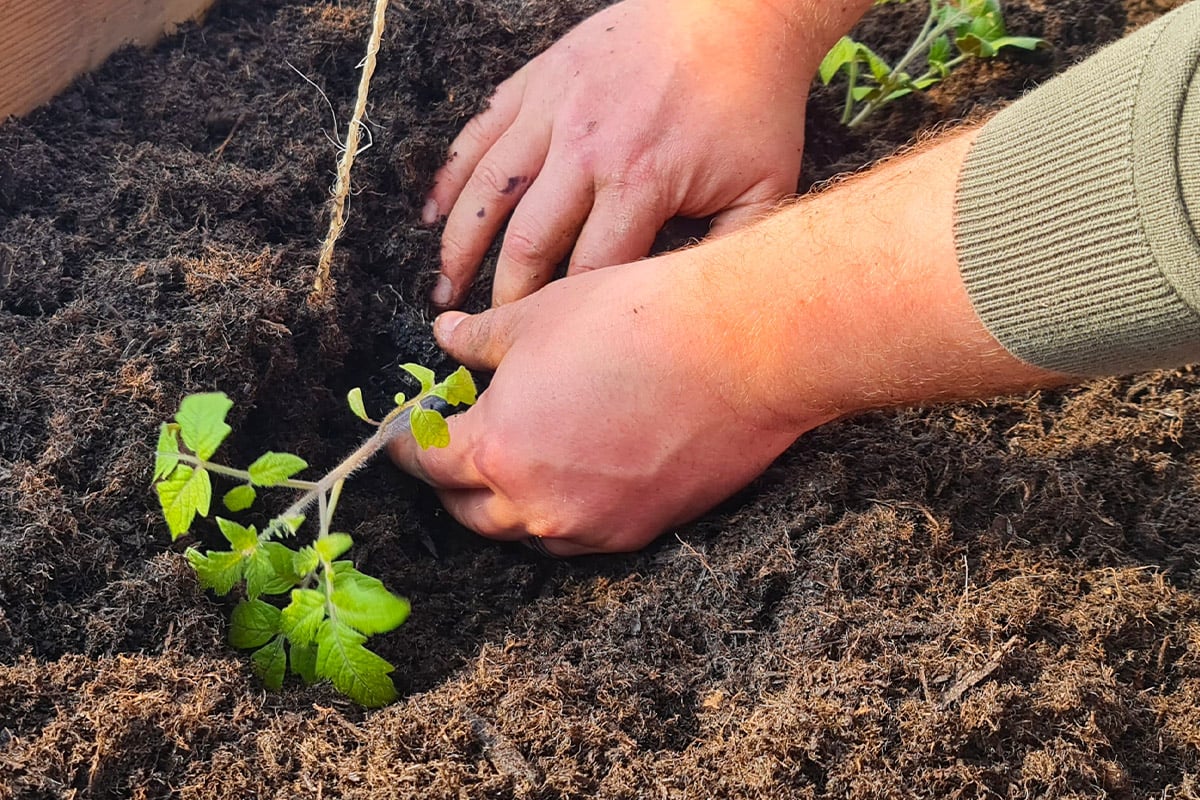Pruning your tomatoes is simple once you know what you are doing. But if you are starting out growing your own, it can be a daunting task filled with jargon you don't understand.
So let me help out and show you easily how to prune your own tomatoes properly.
Get Patient Gardener+
All this for just 99p a month!
- Supporting me to create more UK focused gardening content
- All my content 100% Ad free
- Monthly Step-By-Step guides
- A private friendly community for UK gardeners
- Access to my exclusive members only gardening store with huge discounts!
- In depth growing lessons (being filmed this year)
- Free garden building plans (greenhouses, raised beds, compost bins etc)
- Competitions and prizes
- Buying guides & equipment reviews
- Behind the scenes content
Video
Prefer to watch a video? I got you covered. View this article in video form below.
Determinate V Indeterminate
I have a whole article on this, which you can find here.
Essentially, there are two types of tomatoes: ones that need pruning and ones that don't.
Determinate tomatoes are also known as bush tomatoes. They are much more compact than indeterminate tomatoes and don’t require pruning or training. They will grow into a bush and set their fruit all at once.
Indeterminate tomatoes are vining tomatoes. They will keep growing taller and taller until killed by frost. These do require pruning.
Many of the common tomatoes we grow are Indeterminate, but some are determinate. Some of the more popular determinate tomatoes are tumbling tom and Roma. Be aware that it is not only cherry tomatoes that can be determinate.
You can find out whether the variety you are growing is determinate or not with a quick Google search or check the seed packet - it's often on there somewhere.
Removing Sideshoots
Removing side shoots is an ongoing basic tomato maintenance job.
You will often hear this referred to as pinching out. This is because you ideally pinch out the side shoots when they are young, often with your fingernails.

Just nip these little shoots out while they are young. You can use your hands, scissors, secateurs or a nice sharp knife; anything will do.
Why Do We Do This?
Rather than just telling you what to do, I think it helps to explain why we do certain things as gardeners.
Pinching out the side shoots stops your tomato plant from growing too bushy.
If left unchecked, tomato plants like to grow lots of foliage and fewer fruits, as we are only growing them for the fruits, then this is obviously not ideal.

You can see above that a sucker will quickly grow into a full-blown stem!
Removing all of the side shoots is known as growing the plant up a single leader.
All this means is it has one main stem all the way up. You can train them to two leaders by allowing one side shoot to grow into a second stem.
This is commonly done in warmer countries with longer seasons. You will see it on a lot of American-based YouTuber's channels and may think this is how to grow tomatoes.
Growing on a single leader is much more common in the UK. This is mainly due to our shorter growing season and unsuitable tomato growing conditions meaning we grow tomatoes in a greenhouse or polytunnel. If you didn't prune to a single leader you soon wouldn't have room to move in the greenhouse.
This doesn't mean that growing up a single leader is the only way to grow tomatoes, many people will have success with other methods. But I would strongly advise you to start this way and then test other methods later and see what works for you!
Remove Lower Leaves
The next job is removing the plant's lower, older leaves. Just snip them off near to the stem and then throw the leaves on the compost heap.
Why Do We Do This?
The lower leaves on your plant aren't doing much anymore. Almost all of the photosynthesis happens in the young, new leaves near the top of the plant.
By tidying them up and removing the older leaves, we allow more light in at the bottom of the plant; this is important if we are growing close together or have another crop like basil growing underneath our tomatoes.
The leaves also suck up a lot of water but don't actually do much for the plant. By removing the lower leaves, we reduce the amount of water your plant needs.
This means it can go longer without watering and is also less prone to blossom end rot.
Removing the lower leaves also increases airflow around the plant, minimising the risk of fungal infections like the dreaded blight.
It also allows more of that precious sunlight to hit the fruits, speeding up the ripening process.
Another added benefit is that it helps to make spotting pests on your plant much easier.

Cutting Leaves In Half
This is something I often do lower down the plant if it has any huge leaves.
Making the leaves smaller reduces the amount of water loss, meaning you need to water less, and your plants are better able to survive dry spells.
It also helps open the plant up, reduce the risk of disease, and make pest spotting easier.
And it also helps let more light into any plants growing under your tomatoes, I like to grow basil here.
It is very similar to removing the leaves but not as drastic; if your plant has put out some monster leaves, then give this trick a try. I often end up with some huge leaves that cover my path. Every time I walk past, I risk damaging them, opening them up to possible infection. Better to make one clean cut now and remove half the leaf than have repeat wounds on the plant.

Topping The Plant
Topping the plant is when you remove the growing tip late in the season. You simply snip the whole top section of the plant out so it will no longer grow upwards.

Why Do We Do This?
Well, as it happens, I don't do this, but many other growers do. So, let's discuss the pros and cons.
Your tomato plant will keep on growing until colder weather kills it off. At this point, any unripe tomatoes that are still on the plant must be harvested while they are still green.
Topping the plant stops it from putting its energy into growing upwards and instead into developing all of the fruit already on the plant.
The tradeoff is that you won't get any more tomatoes by topping the plant. But the ones on the plant already will be bigger and more likely to ripen fully.
If you let the plant continue to grow, you will get more tomatoes, but you are much more likely to end up with a bunch of unripe green tomatoes.
How many more tomatoes you get depends on the weather at the back end of the season and is a guessing game. We could have a beautiful autumn with frosts not arriving until very late, or a hard frost might come early - no one really knows.
Green tomatoes can still be used and make great chutneys, among other things, which is why I just let my plants grow and then harvest all the green tomatoes once the plant has died.
Before/After Pruning
I let this tomato plant get away from me a bit, for the purposes of writing this article of course...
Here is the before-and-after shot of the pruning. I included this to show you that you can remove quite a bit of foliage—don't be afraid to get stuck in!

Pin It
Want to add this article to your Pinterest board? Pin the image below!







Mainza Mauluka says
Ok that's very interesting, I need to learn more even on diseases that attacks tomatoes in the early and late stages and there solutions
Terry Ruse says
Helpful
Daniel says
cheers Terry
Tommy Stone says
Frist year growing Tomatoes thanks for the advice
Barry victor Brown says
Did not know you could cut some of the bigger leaves in half, Thank you I will give them a go.
Ken says
I have two plants in raised bed. One cherrie and one big girl. I delayed pruning do to all the rain, hail and tornadoes this year here in Colorado. The plants both seem health but do not want to stress the plants any more. I lost all my cucumber plants but my zucchini plants are loving the weather. Should I hold off on tomatoe plants or start pruning?
Daniel says
I would definitely remove the sideshoots if they are indeterminate, but apart from that possibly just remove any weak or dying leaves.
Kim says
Thank you for your help
Eugene says
Thanks for the info
Sandy says
Fantastic article thankyou.
Daniel says
Thank You 🙂
Barry victor Brown says
Every Year we remove the green tomatoes and Put them into a Draw, A gas build up inside the Drawer, and within weeks they all turn Red. As I liked to grow plenty of Tomatoes, And as I lose few on the way. They are all watered and Fed at the same time. Saving water and time. I hope this Helps people who wait for weeks for their Tomatoes to turn Red.